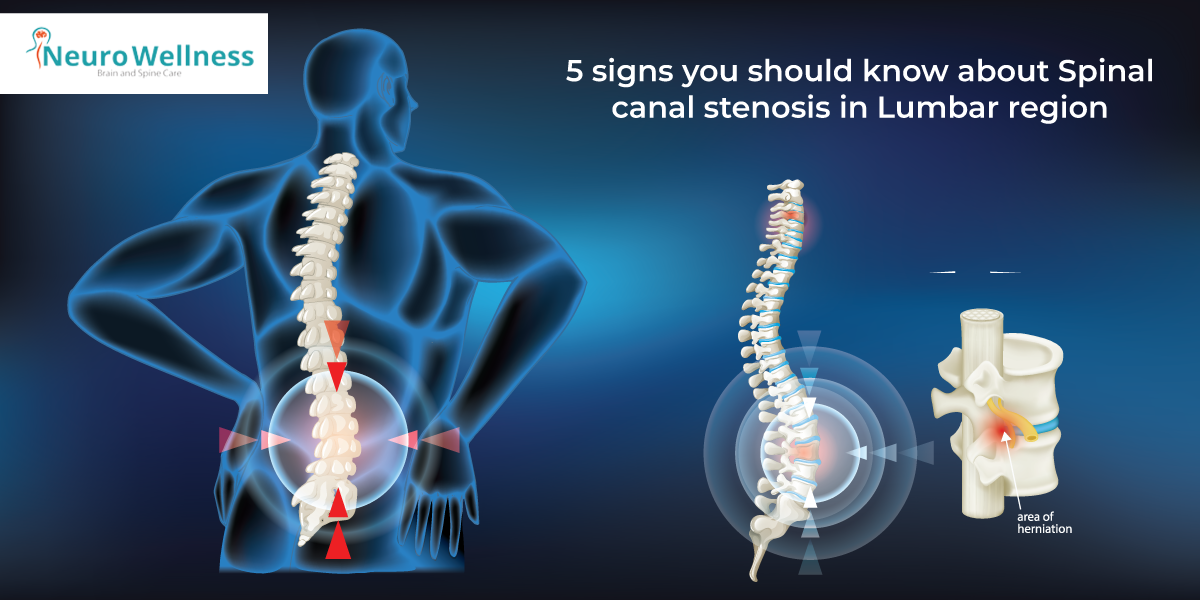Signs about Spinal canal stenosis in Lumbar region
Stenosis of the lumbar spinal canal means narrowing of the bony canal in the low back spine. This narrowing compresses the spinal cord and spinal nerves in the lumbar region. Lumbar canal stenosis is a condition that happens more likely in people over 50 years of age and gradually worsens as the age increases.
Here are few typical signs and symptoms which may suggest that you may be having lumbar canal stenosis. One may experience more than one symptoms the same time:
1. You may have sudden relief of pain on rest after walk-Neurogenic claudication
Lumbar nerves, which are the nerves in the lower back get compressed due to such narrowing of the lumbar spinal canal, causing one to experience the following:
- A Constant pain with/ without numbness in one or both legs while standing
- Aggravation of pain with/without numbness in the legs while walking variable distances and/or when bending the trunk backward
- Exercises or activities while standing may be difficult
- Resting by lying down flat may improve or resolve the pain and/or numbness
This claudication pain is typically relieved when you bend your spine forward (such as while leaning on a shopping cart/walker, squatting, or sitting and leaning forward- called shopping cart sign). A doctor can differentiate this pain from vascular claudication, which can mimic neurogenic claudication, through a series of questionnaire.
2. You may have pulling kind or radicular pain in legs called -Sciatica
Pressure on the nerve roots in lumbar spine may cause a shooting or pulling type of pain to the legs along the entire length called lumbar radiculopathy or sciatica. This pain is usually felt in one leg at a time with weakness of the limb affected.
Depending on the nerve root(s) affected, pain may occur in your lower back, buttock, thigh, calf, leg, and/or foot. A pins-and-needles sensation, tingling, weakness, and/or numbness may also occur in the areas affected by pain.
3. Foot drop- may need to lift foot to facilitate walking- gait problems
Long standing compression nerve roots in lumbar region can causing inability to lift the foot and/or toes. The person with this weakness may have to lift the foot high and stamp to overcome the foot or toes dragging over the ground. This is called high stepping gait. This causes inability to perform activities of daily life like driving a two wheeler or a four wheeler.
4.Cottonwool sensation of sole of foot- due sensation loss at later stage
Gradual loss of sensations over the sole of foot may result in inability to sense the touch of ground or footwear, the person may feel he is walking over air or cotton wool.
This can make a person susceptible to falls on uneven surface.
5. Bowel or bladder dysfunctions at later stages called caudal equina syndrome
Rarely, severe spinal stenosis may cause red-flag symptoms, such as bowel and/or bladder incontinence, numbness in the inner thighs and genital area, and/or severe weakness in both legs.
These symptoms indicate a serious medical condition, such as cauda equina syndrome, which must be treated urgently to prevent permanent loss of function in the legs.
Hence it is important for us to know early symptoms to diagnose lumbar canal stenosis, which is a common problem especially elderly. If treated you can get back on feet and lead quality life. Your Neurosurgeon or qualified Spine surgeon can see and diagnose the spinal canal stenosis and advise treatment accordingly.
Written by – Dr Manjunath.

